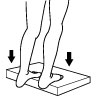 Orthotics & Insoles
Orthotics & Insoles
Orthotics and other shoe inserts are often peddled as a treatment, and even cure, for Plantar Fasciitis. They are promoted as providing support for the Plantar Fascia, but they will only make your situation worse. Orthotics and arch support put unneeded upward pressure on your Plantar Fascia, which can cause further damage to your injured tissue. Extra support should be placed on the heel of your foot and the ball of your foot (Metatarsals), not your Plantar Fascia. If you have fallen arches or naturally flat feet, consider adding support to the heel and ball areas of your shoes. Otherwise, there are much more effective treatments out there for Plantar Fasciitis.
Night Splints
Much like orthotics and insoles, night splints apply pressure to the middle of your foot, where the Plantar Fascia is located. This is dangerous and can potentially cause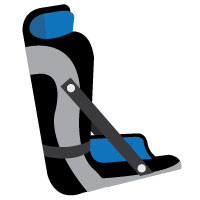 damage every time you wear it. When you sleep at night, your Plantar Fascia will try to heal itself. If you’re wearing a night splint while you sleep, your Plantar won’t be able to heal itself at all. Actually, your Plantar Fascia is likely to re-tear, causing more damage and more pain. Putting your Plantar Fascia on stretch, like what happens when you wear a night splint, is not a good idea in the first place. This is not a natural position for the Plantar Fascia to be in, and does not aid in healing. The reason you have Plantar Fasciitis is because you’ve elongated your Plantar, causing microtears. Wearing a night splint will only stretch it even more.
damage every time you wear it. When you sleep at night, your Plantar Fascia will try to heal itself. If you’re wearing a night splint while you sleep, your Plantar won’t be able to heal itself at all. Actually, your Plantar Fascia is likely to re-tear, causing more damage and more pain. Putting your Plantar Fascia on stretch, like what happens when you wear a night splint, is not a good idea in the first place. This is not a natural position for the Plantar Fascia to be in, and does not aid in healing. The reason you have Plantar Fasciitis is because you’ve elongated your Plantar, causing microtears. Wearing a night splint will only stretch it even more.
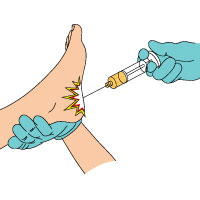 Cortisone Shots
Cortisone Shots
While cortisone shots can temporarily relieve pain and inflammation, they can also cause long-term damage. Cortisone shots are actually one of the more dangerous treatments out there when it comes to Plantar Fasciitis, as they can lead to complete rupture of the Plantar. If your Plantar Fascia is ruptured, you will need it to be surgically repaired. Cortisone shots also come with other risks and side effects such as nerve damage, bone death and skin discoloration.
Ball Rolling, Towel Stretches & Step Stretches
There are several stretches and exercises that can help treat Plantar Fasciitis, but these should be done later on in the healing process. Ball Rolling, Towel Stretches and Step Stretches will only cause further damage to your Plantar.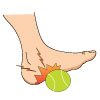
Ball Rolling is where you take a tennis ball and roll it back and forth using the bottom of your foot. The Plantar Fascia is not meant to have this kind of upward force applied to it. Ball Rolling will only result in more pain and undo all of your healing.
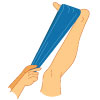 In Towel Stretching, you would take a small towel and use it to pull your foot towards you. This causes undue stress of the Plantar, resulting in more tearing of the tissue. They also stretch out your Achilles Tendon, which in turn can result in more pressure being placed on the Plantar when walking.
In Towel Stretching, you would take a small towel and use it to pull your foot towards you. This causes undue stress of the Plantar, resulting in more tearing of the tissue. They also stretch out your Achilles Tendon, which in turn can result in more pressure being placed on the Plantar when walking.
To do a Step Stretch, you would stand with the middle of your foot on the very edge of a step, with your heels hanging off the edge. This is just another stretch that puts unnecessary pressure on the Plantar Fascia and can lead to a worsened condition. Step Stretches can cause serious damage and take away all of the healing you’ve accomplished.
